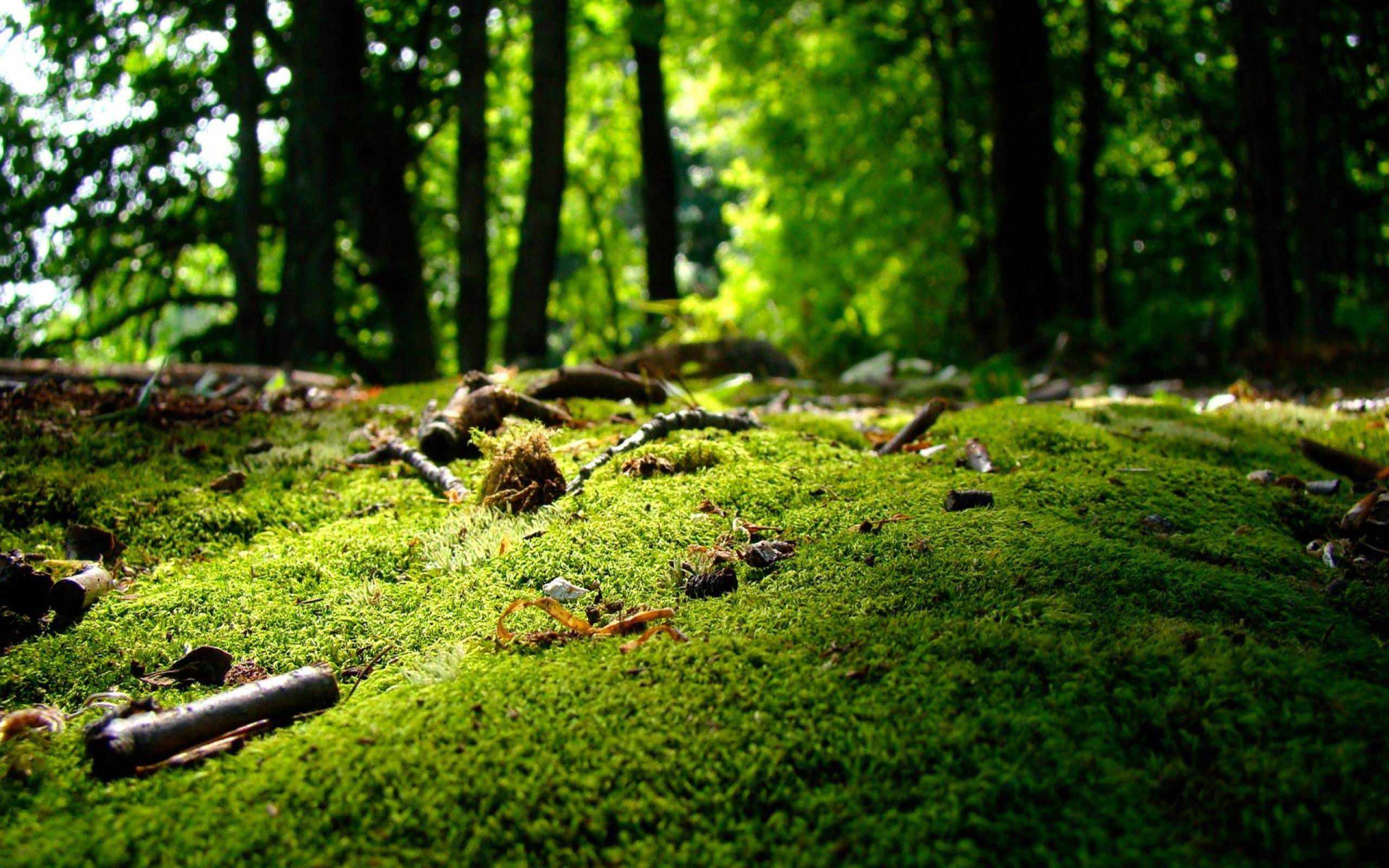Author:
Green Steps
Short summary:
This article is about our four-day trip to the Neusiedler See. It was an ornithological trip, and by reading this article you will learn about some of the birds we discovered there.

On the first day, we visited Kócsagvár. This is the visitor center of the national park Fertő-Hanság. It was built in 1993 and the directorate of the Fertő-Hanság National Park has been operating here since the beginning. One of the most common birds of the national park is the Great egret (Ardea alba) and for this reason, the center of the national park is named after this bird - «Kócsag» means heron. The national park center is a typical building for old fishing villages in Hungary. The building complex uses natural materials and has an interesting style. It shows us the typical motifs and decorative elements of the Fertő region. The most noticeable element is a traditional thatched roof. Because of the roof and unusual shape of the building, it looks like a huge fungus or a futuristic plant that suddenly arose in the middle of the national park. Such roofs were typical for this region and you can still observe them here in this region.

In Kócsagvár, we look at the photos of birds on the walls. Soon afterwards, we walk to the observation deck and these pictures start moving, singing, and flying around us. In the meantime, we look at the pictures and discuss about bird names in different languages:
«In German Löffelreiher means a spoon as in English because of the strange shape of the beak of the Spoonbil!»
«Black-winged stilt got its name because of its long legs which resemble stilts. But in Italy, this bird is called Cavaliere d'Italia! It’s a very elegant bird so this name suits it very well»
«Oh, this is a falcon – my last name!»
In the end, we spend a long time near the photo of a bee-eaters flock. These are the colorful birds we want to see the most.
At the exit, we see a beautiful wooden gate on which two egrets are facing each other. The population of Great egret has been threatened for centuries by the fashion of wearing egret feathers. Due to this fashion and loss of habitat, the species was almost extinct by the end of the 19th century. Egrets live in wet habitats, mostly on the marshes, and draining the marshes has put them in danger. As a result of strict preservation laws, the Fertő-Hanság National Park is now home to the largest heron population in Central Europe, with more than 700 pairs.
We spot a Great egret flying on the trail near Kócsagvár. It is not difficult to distinguish it - it always folds its neck in the shape of the letter S. On the same trail, we hear unfamiliar bird songs. These songs are very diverse and remind of the nightingale's songs in their variety. Soon we see the performer - a little brown bird, Warbler, swaying on a reed. In the dense reed, there are a lot of nests and we can hear Warbler’s songs all the way.
The next day we go to the Hanság. Outside the car window is a steppe habitat without trees. We are in Puszta, a large area of salt steppes and salt lakes. It is derived from the Old Slavic word «pustь» which means «abounded», «uninhabited». The landscape consists of treeless steppe with a strong continental climate. Puszta originated as forest-steppe more than 35,000 years ago, gradually transformed into grass-steppe more than 8,000 years ago, and gradually spread over the past 3,000 years as cultivated steppe.
We pass colossal crane wells, with their heads bowed to the water. I call them cranes, as is common in Russia, my home Country, however, here they are called wells-herons. As you can see, the heron is an important bird for these places. The image of the white heron can be seen also on 5 forints (the basic monetary units of Hungary).

Hanság is a marshy land with «leggy alders» – the roots of the trees cannot follow the subsidence of the soil, so that, their root systems are partially visible above the ground.
Black alders (Alnus glutinosa) are common trees for marchy habitats. Specific bacterias as Frankia alni, settle on the roots of these trees, fix free nitrogen from the air and provide soil-improving properties. Therefore, alder can grow well in nutrient-poor soils where other trees would not be able to grow. Leggy Alder roots remind me of the elderberry pancakes that Knut made for dinner last night.
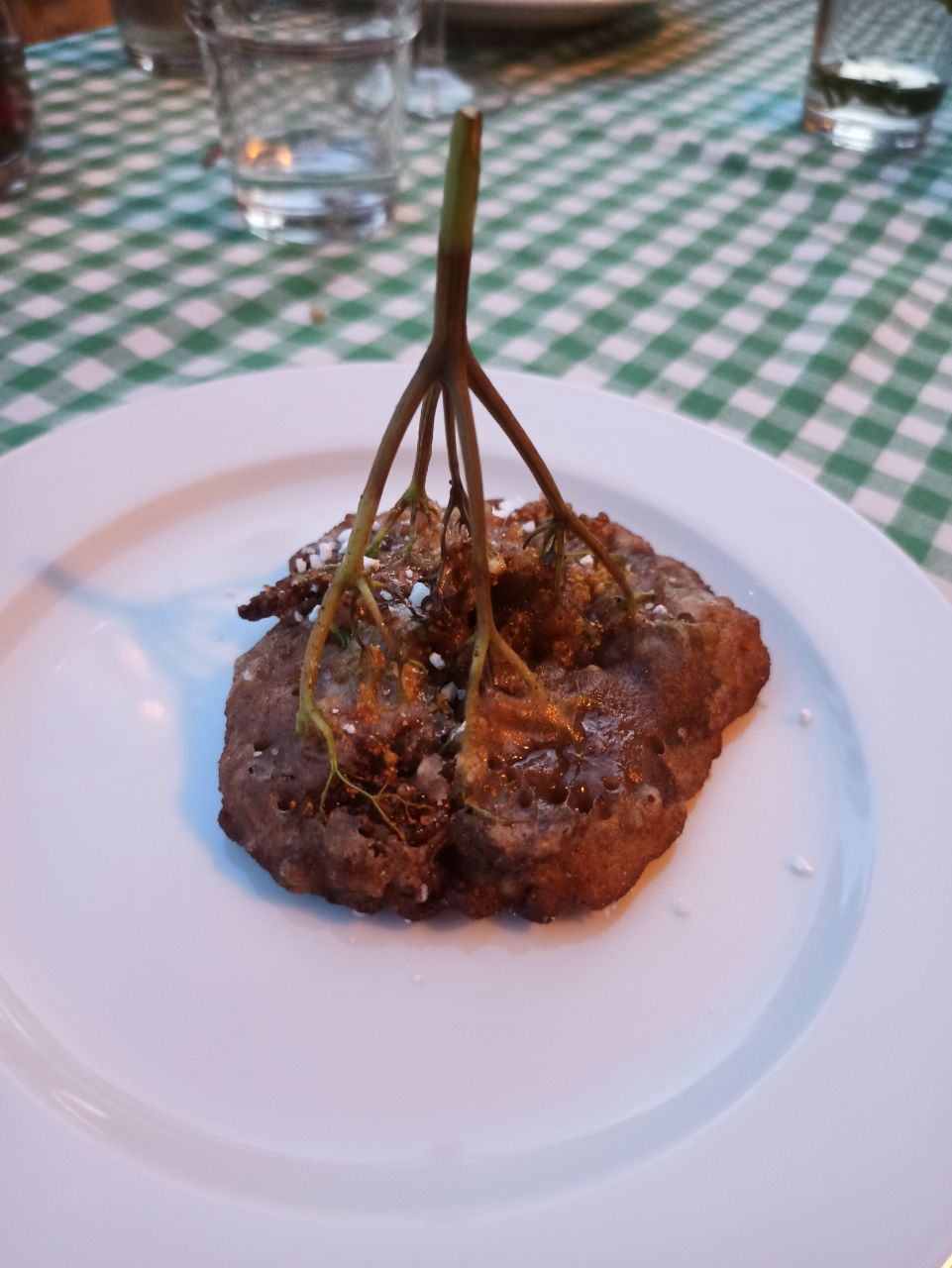
For centuries, the people living in Hanság have suffered from flooding during the rainy season and the human interference caused considerable damage to this delicate ecosystem. The rich, unique flora and fauna of Hanzag were threatened with destruction and extinction. After that, the Fertö-Hansag National Park was established. Now the landscape has been restored, with areas being flooded again to ensure the survival of the ecosystem.
There is a legend about Hany Istók associated with these places. In 1749, a group of fishermen found in the river a small boy. He could not speak, nor he could be taught, he could only make animal sounds. He ate grass, raw fishes, and frogs, swam in the water like a fish, and had webs between his fingers. They tried to teach him to talk, but without success. Thus, they entrusted him with carrying water and turning steaks. Hany Istók wanted to please his help and poured a bowl of frogs on the table. Then, they beat him, and he escaped the next day. 4 years later, the fishermen saw him again in the swamp, but he fell under the water and was never seen again.
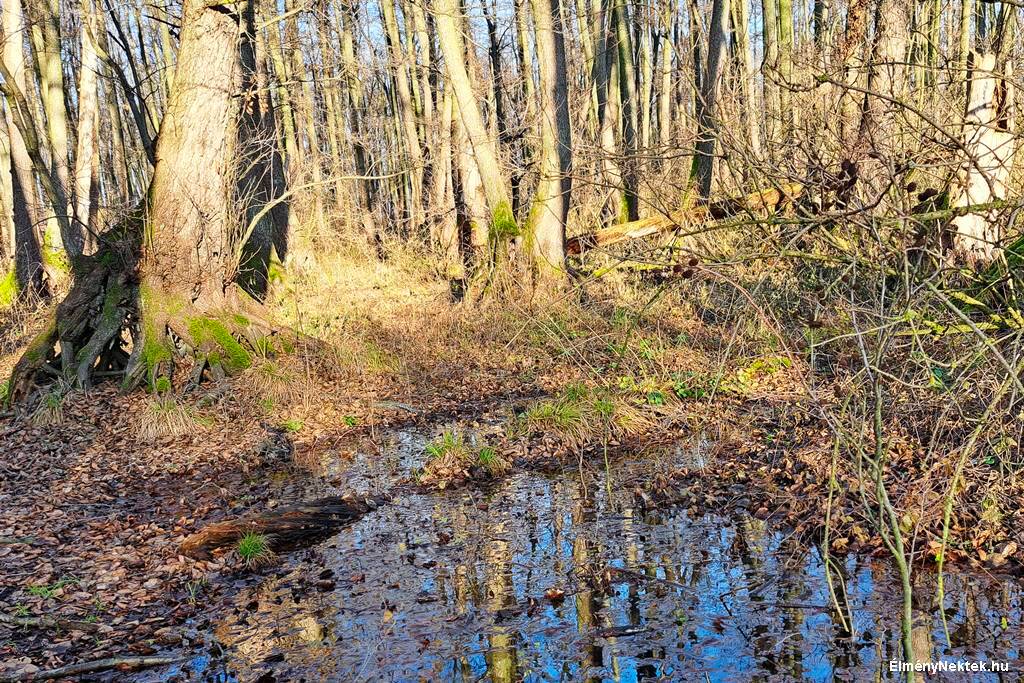
We walk through this strange leggy forest, swatting away mosquitoes. Somewhere in the distance a cuckoo is cuckooing – according to Russian belief, its sound counts how many years we have left to die. Maybe the mosquitoes are taking our blood to the cuckoo for analysis?
Anyway, we reach the first observation point, Király-tó kilátó, after losing a lot of blood. Fortunately, there were no more mosquitoes at the observation point, and we quietly look through binoculars at the white, grey, and purple herons, cormorants, and warblers flying by.
And on the second observation deck Osli-Hany-kilátó we encountered a herd of water buffalos and a whole flock of bee-eaters, which we so wanted to see. Usually, when people think of water buffalos, they imagine the African or Asian steppes. However, a few of them can be found in the Burgenland steppe. Bee-eaters fly around buffalos and sometimes land on them to peck ticks off their backs. Here is where we spend a lot of time. We watch how bee-eaters catch dragonflies in flight and eat them. They eat different flying insects, but especially bees and wasps. When a bee-eater catches a poisonous insect he slams it against a rock several times. They do this to remove the sting of the insect. During this process, pressure is applied to the insect's body to discharge most of the venom.
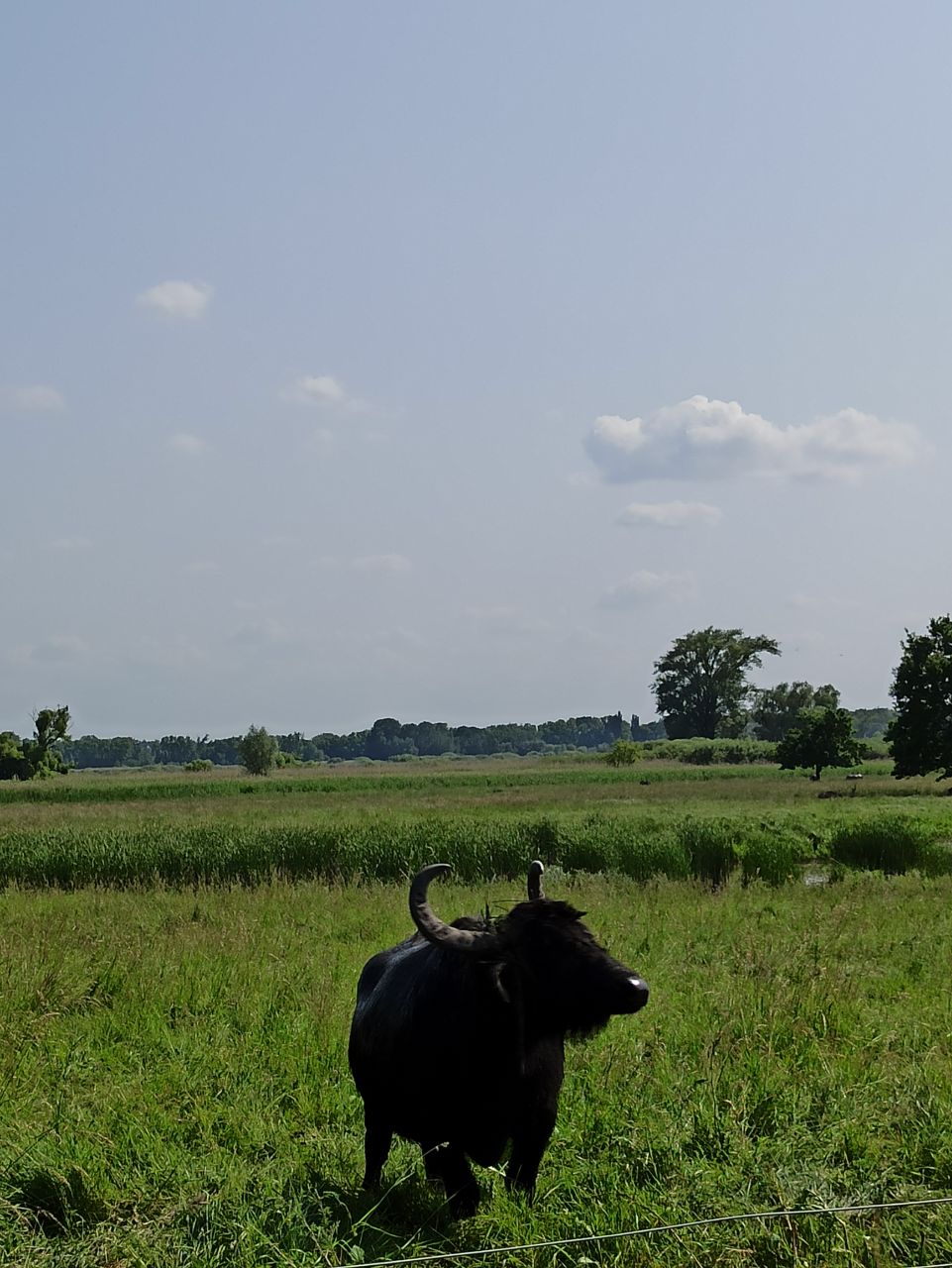
The song of the bee-eaters resembles the cries of the gulls, only muffled as if the sea were somewhere far away.
In the evening we move back to the Neusiedler See to meet baby gulls. For Black-headed Gulls (Chroicocephalus ridibundus) nesting on the lake, it was located a special island, where the gulls can build their nests. Interesting that these gulls have dark head only in their breeding season over summer, while in winter their head is white. In addition to the seagulls, we see the Black-winged stilt. Gloria was wearing a T-shirt with the image of this bird so we could compare the image with the original bird. Black-winged stilt has incredibly long red legs and he walked in the water looking for food. They feed mainly on insects and crustaceans on the surface of the water.
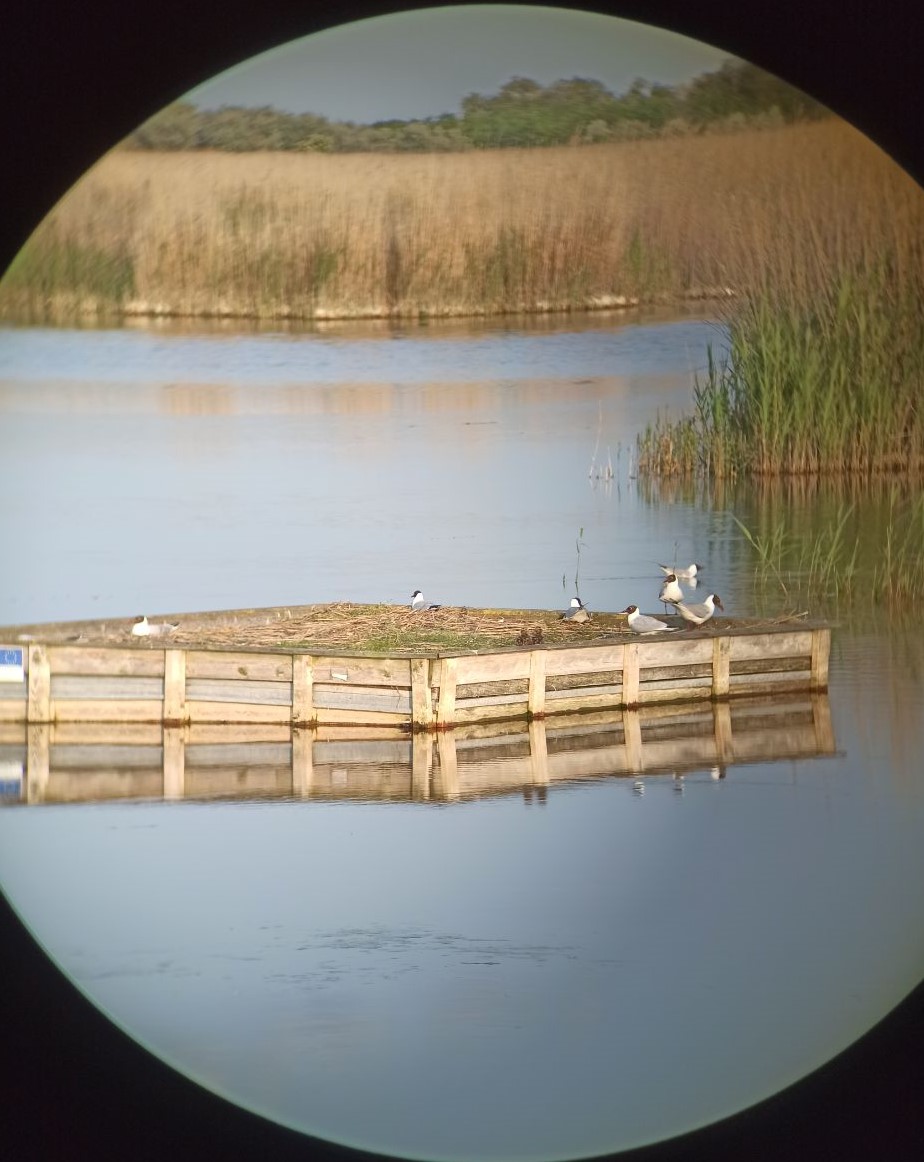
On the last day, we decide to go to the “bee-eater’s house”- to observe their breeding habitat. In front of us is a hill riddled with small cavity nests. Bee-eaters are nesting colonially on sandy shores. Their nest is a long tunnel in which they lay 5-8 eggs. Both male and female care for the eggs, which they breed for about three weeks.

We notice a lonely black bird among a flock of colorful red-yellow-green bee-eaters. It looks lonely, lost, and out of place, so we immediately forget about the beautiful bee-eaters and start discussing how it got here and what kind of bird it is. Someone assumes that it is a lost chick, and someone specifies that it is most likely a starling.

There begins a long discussion about this starling. There are too few «stars» on this bird, or rather they are not visible at all. I assumed that this is just a starling without stars and that is why we can’t spot them. Gloria found a spotless starling in her bird book. Spotless starlings looked exactly like this strange bird. However, according to the map at the bottom of the page, it does not nest in Austria.
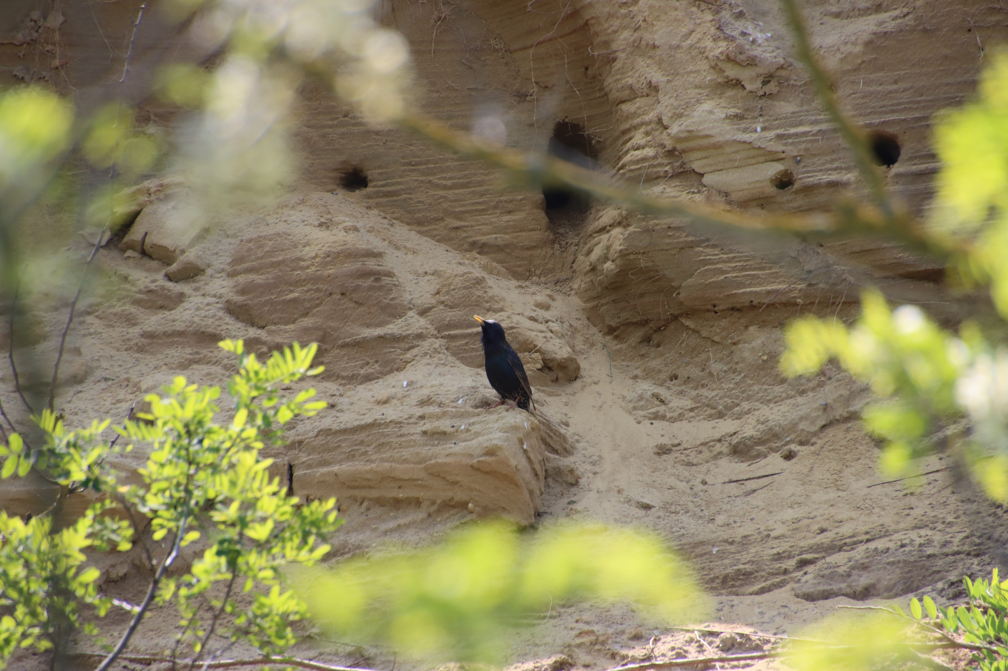
The bird gets tired of being the center of our attention and flies away. And after walking a few meters to the next loess wall, we meet a whole flock of starlings living peacefully together with bee-eaters. But we still do not understand whether they are lost spotless starlings or common starlings in their summer guise without stars.
On the way back, we see a hare jumping in the vineyards. Sweet, botrytized wines are also a specialty of the region, particularly in the terroir surrounding the Neusiedlersee Lake. Botrytized wines are wine specialties made of overripe grapes infected by Botrytis cinerea with the form «noble rot». Lake Neusiedlersee stores summer heat from the Pannonian Plain, an expansive, warm area that covers much of Hungary and eastern Austria, effectively lengthening the ripening grape season into autumn.
The Neusiedler lake and its surroundings are an absolutely unique place. It is home to amazing birds and animals, so it is better to go to these places with binoculars and good company.




